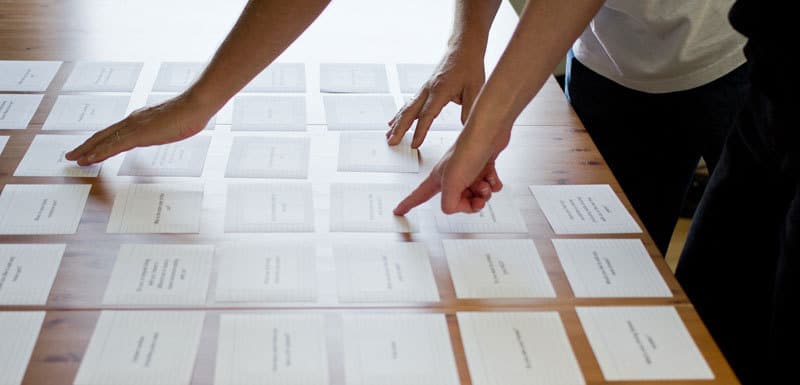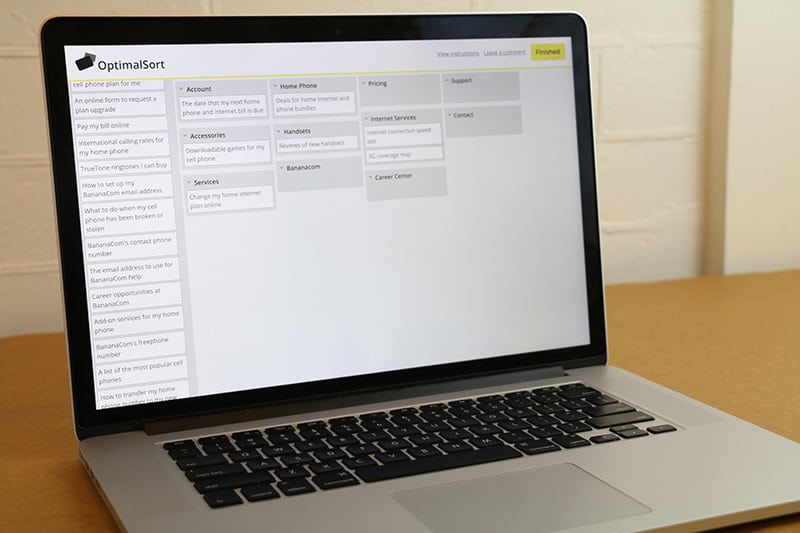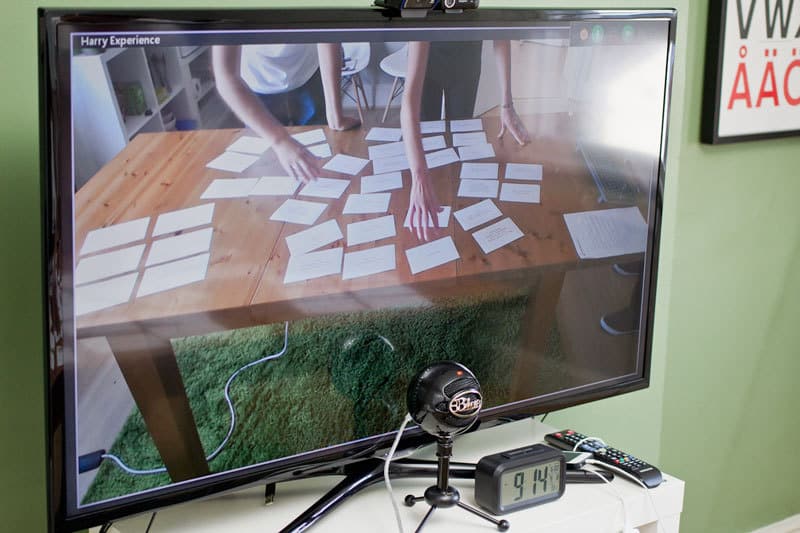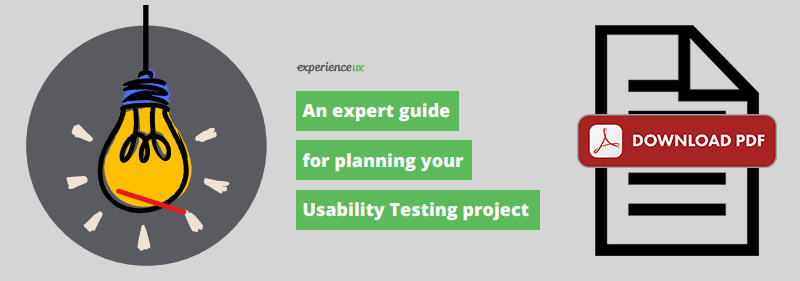Card sorting delivers insight on labelling and grouping
Card sorting is a relatively low-tech and inexpensive method used to understand how a user would organise and structure content that makes sense to them. Card sorting can be conducted in a number of ways such as actual cards, pieces of paper, Post-It notes or online tools such as Optimal Sort, which allow you to conduct the research remotely.
This insight allows you to understand how users would expect to see content grouped on a website and how they might see these groups labelled. While card sorting might not provide you with a final information architecture or menu for your site, it can help to identify trends and how many potential categories there could be.
There are a few different types of card sorting methods:
1. Open card sorting
Users are asked to organise cards into groups that they feel is appropriate to them. They are then asked to name each of the groups they have created with a label that best describes that group. This method is commonly used for new/existing information architectures or organising products on a site or when starting to create a new IA from scratch.
2. Closed card sorting
Users are provided with both the content cards as well as the category cards and asked to place the cards in these given categories. This method is normally used when adding new content to an existing site or gaining a second round of insights after an open card sort.
Card sorting can also be either remote or face to face:
3. Remote card sorting
When conducting a remote card sorting session a user will work independently via their own computers to sort the cards that are provided through an online software tool. There are a number of online software tool available on the market today which allow you to set up and distribute to as many users as you require for the test. Some of the most common online software tools are Optimal Sort, Simple card sort and Usabilitest. These online software tools provide you with a number of ways to analyse the data. As the test is conducted remotely there is no contact with the user so there is no way of understanding the reasoning behind why the user has arranged the cards in a certain way.
4. Face to face card sorting
Face to face card sorting sessions are in person with an observer present. Users are provided with a set of cards to move around and asked to talk through their thoughts and reasoning behind their decisions. The observer has the opportunity to clarify any observations they are unsure of to gain a better insight into why the user has made those choices.
Analysing the data
Once collected, the data is analysed to identify common trends. This is done by using cluster analysis software or if the sample size is small, by inputting the data into a spreadsheet to see if there are any patterns in the groupings or labelling.
Advantages of card sorting
- It is simple and cheap to run card sorting sessions
- Quick to get research conducted and results back from users, especially if sessions are conducted remotely.
- Provides a good insight about the users and how they would expect the information to be organised
Disadvantages of card sorting
- Results can be varied and there could be no real pattern in the data
- Analysing the results can be time-consuming depending on the complexity of the data
- Card sorting does not take into account users tasks and goals, so if the research is used without taking this into account, you could end up with a structure that is not usable for the user to complete their tasks on the site.
Conclusion
Card sorting is a quick, simple and inexpensive way to gather insights about your users and their thoughts on groupings, categories etc. This method works well at the beginning of projects if you are working on a redesign of a site and as a way of added new content to a site, but will not give you all the answers that you are looking for. Tree Testing is a technique that can be used to validate or challenge the results of your card sort. Using card sorting along with other UX methods such as usability testing and tree testing can help you find out invaluable insights about the experience of your digital products and services.
You might also like:





